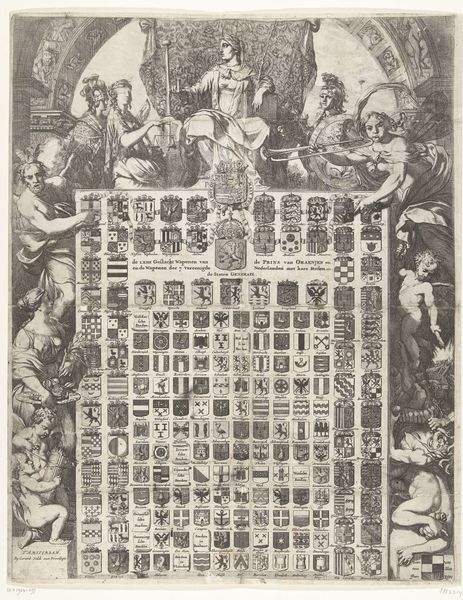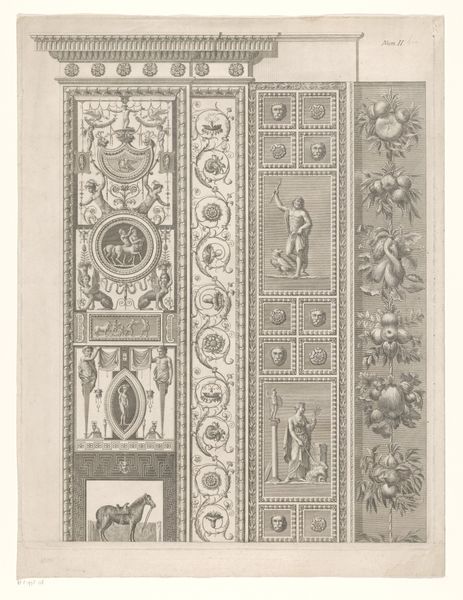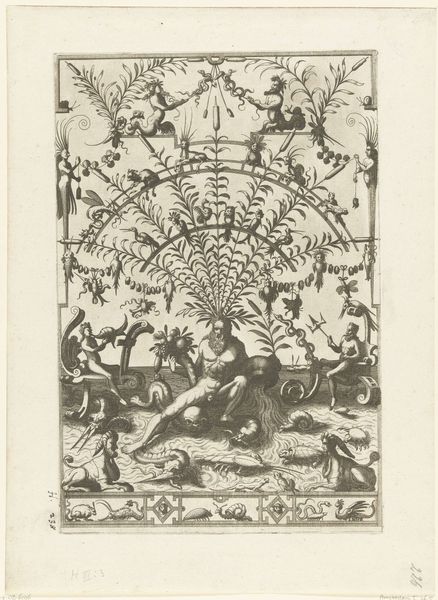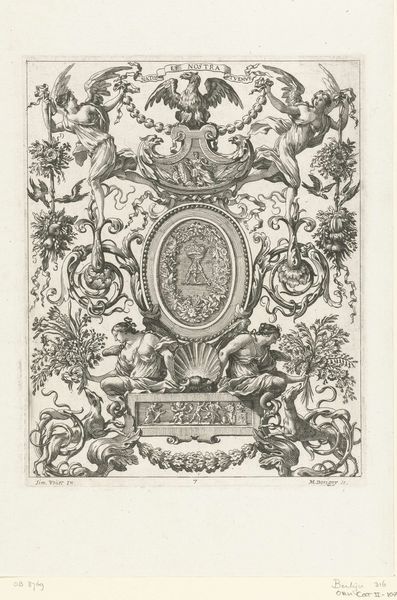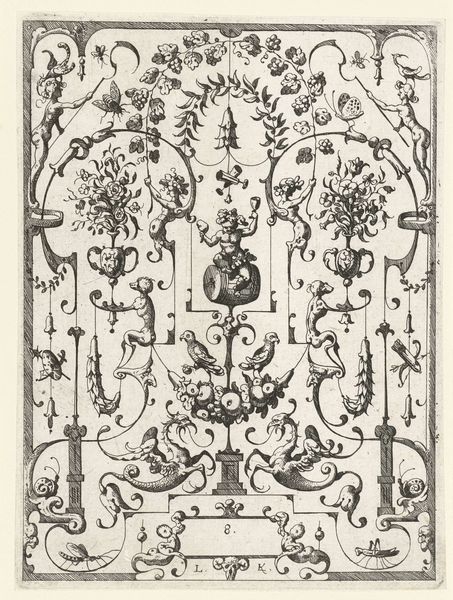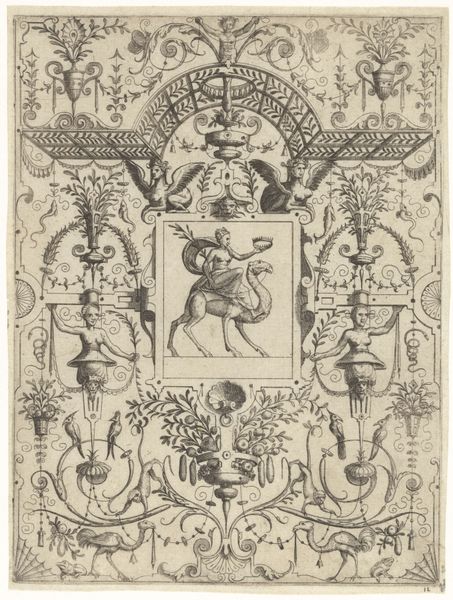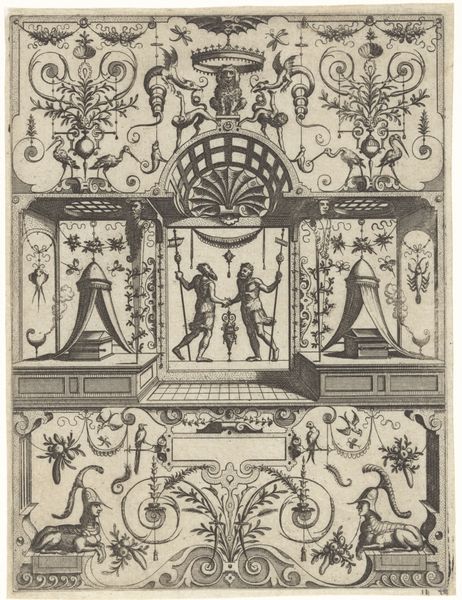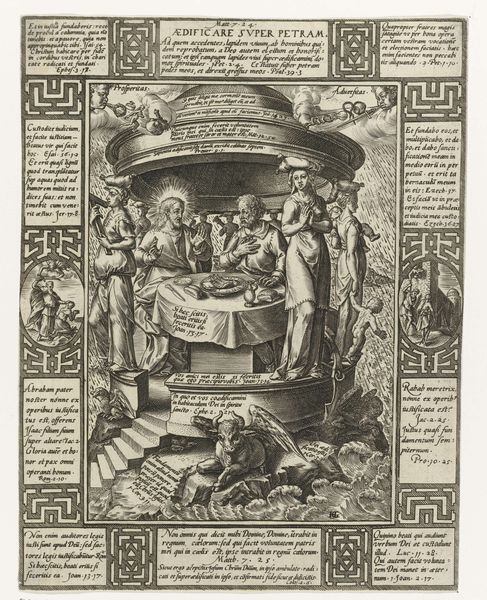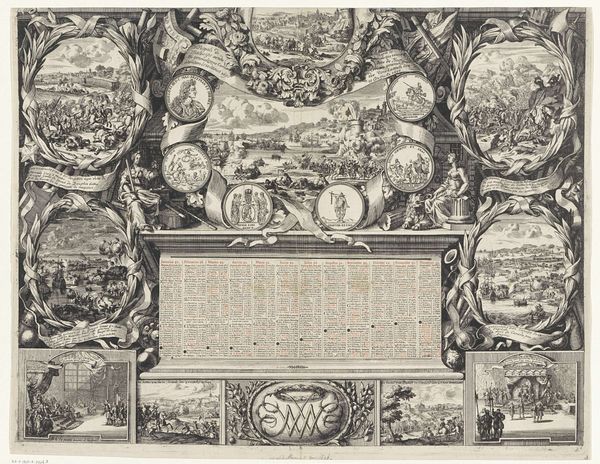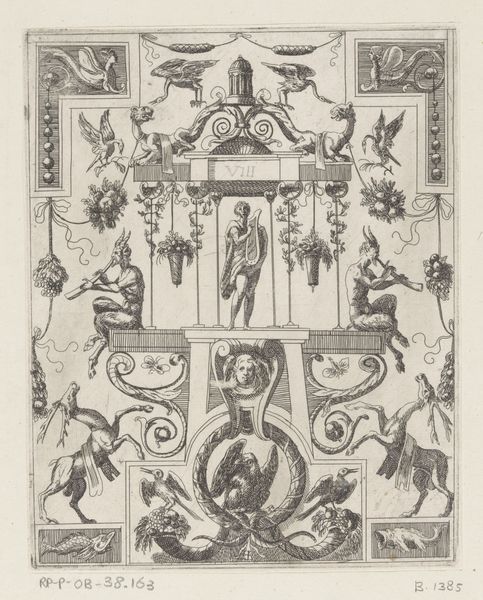
graphic-art, print, engraving
#
graphic-art
# print
#
figuration
#
11_renaissance
#
line
#
history-painting
#
northern-renaissance
#
decorative-art
#
engraving
Dimensions: height 317 mm, width 242 mm
Copyright: Rijks Museum: Open Domain
Editor: This engraving from 1595, "Eeuwigdurende Gregoriaanse kalender met de vier seizoenen" by Johann Sadeler I, is packed with detail. It almost feels like a diagram with all the figures, symbols and tables. How do you even begin to interpret something like this? Curator: The organization of elements here immediately suggests an engagement with systems of knowledge. The crisp lines delineate separate spaces for each image or piece of text. Are those visual compartments helping to communicate something specific about time, order, or categorization? Editor: I hadn’t thought of it that way! The figures representing the seasons around the edges now seem less decorative, and more like pieces of the overall puzzle. There's a figure in the upper register. Is she another reference point for temporality? Curator: Potentially. It seems the structure is a blend of artistry and mechanics, reflecting both a cultural preoccupation with the passage of time, and attempts at ordering nature within an accepted system. The balance creates both beauty and legibility, and even some philosophical propositions. Do the symbolic gestures offer any indication about which comes first, form or function? Editor: Interesting! It appears that form and function have a reciprocal, or maybe even simultaneous relationship here. Thank you! I have to admit, I see this piece differently now that we’ve explored how each aspect contributes to the whole. Curator: Indeed, seeing art through this lens highlights its layered and complex construction. It helps understand how this specific piece embodies the aesthetic and philosophical viewpoints during the late Renaissance.
Comments
No comments
Be the first to comment and join the conversation on the ultimate creative platform.
